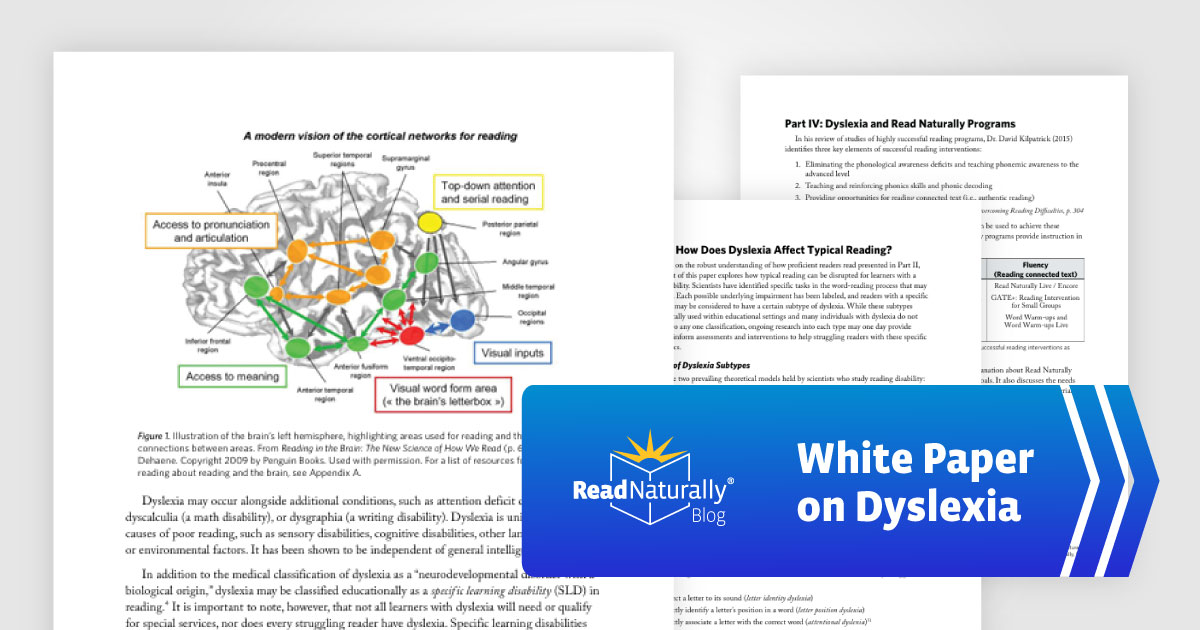Dyslexia is a reading disability that affects millions of Americans. If identified early and treated with effective intervention, however, it does not need to adversely affect an individual's ability to read. Check out our white paper Dyslexia and Read Naturally. The free, online paper is designed in four parts.
Part I: What is dyslexia?
In this section, readers will learn about what dyslexia is, what it is not, and common characteristics of this learning difference.
Part II: How do proficient readers read words?
In this section, readers learn about typical brain development and how proficient readers learn to decode words and develop word recognition.
Part III: How does dyslexia affect typical reading?
In this section, readers will explore how dyslexia may impact the acquisition of proficient reading compared to neuro-typical learners and the unique needs that dyslexic readers have.
Part IV: Dyslexia and Read Naturally Programs
In the final section, readers explore how Read Naturally programs utilize evidence-based practices to support learners with dyslexia. Programs are discussed in relation to three key elements of successful reading interventions—the ability to:
- Eliminate phonological awareness deficits
- Teach and reinforce phonics skills and phonic decoding
- Provide opportunities for reading connected text to build reading fluency

 Share your student’s success story—nominate him or her for our Star of the Month award. Win a Barnes & Noble gift card for the student and a Read Naturally gift certificate for your class!
Share your student’s success story—nominate him or her for our Star of the Month award. Win a Barnes & Noble gift card for the student and a Read Naturally gift certificate for your class!
Post a New Comment